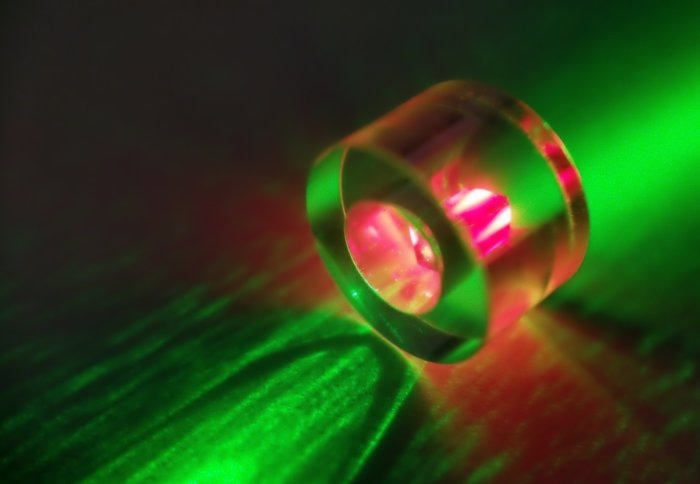 Photo credit: Thomas Angus/Jonathan Breeze, Imperial College London.
Photo credit: Thomas Angus/Jonathan Breeze, Imperial College London.
In 1954, the older, microwave frequency sibling of the laser, masers (microwave amplification by stimulated emission of radiation) was invented.
However, in contrast to lasers, which have become common, masers are a lot less extensively used because in order to work they must be cooled to temperatures touching nearly absolute zero (-273 °C).
However, a new research from Imperial College London and UCL, published in Nature, states for the first time a maser that can work uninterruptedly at room temperature.
In 2012, Imperial researchers showed that a maser could work at room temperature using the organic molecule pentacene. However, it yielded only short bursts of maser radiation that lasted less than one thousandth of a second. At any rate, had the maser worked continuously, the crystal would probably have melted.
Presently, Dr Breeze and colleagues have used a synthetic diamond grown in a nitrogen-rich atmosphere to build a new maser that works continuously.
This breakthrough paves the way for the widespread adoption of masers and opens the door for a wide array of applications that we are keen to explore. We hope the maser will now enjoy as much success as the laser.
Dr Jonathan Breeze, Department of Materials, Imperial College London
Using a high energy electron beam, carbon atoms were ‘knocked out’ from the diamond, forming spaces called ‘vacancies’. The diamond was then heated, which permitted nitrogen atoms and carbon vacancies to pair up, developing a type of defect called a nitrogen-vacancy (NV) defect center.
When positioned within a ring of sapphire to concentrate the microwave energy, and illuminated by green laser light, the team learned that the maser functioned at room temperature and notably, continuously.
Co-author Professor Neil Alford, also from Imperial’s Department of Materials, said: “This technology has a way to go, but I can see it being used where sensitive detection of microwaves is essential.”
The researchers who made the discovery say masers could be used in a variety of applications such as airport security scanning and medical imaging. They have more traditionally been used in radio astronomy and deep space communication.
Besides airport security scanning and medical imaging, masers could have a key role to play in enhancing sensors to remotely detect bombs, new technology for quantum computers, and might even advance space communication approaches to potentially locate life on other planets.
This study was funded by the UK Engineering and Physical Sciences Research Council and supported by the Henry Royce Institute.
Element Six created and provided the synthetic diamond.